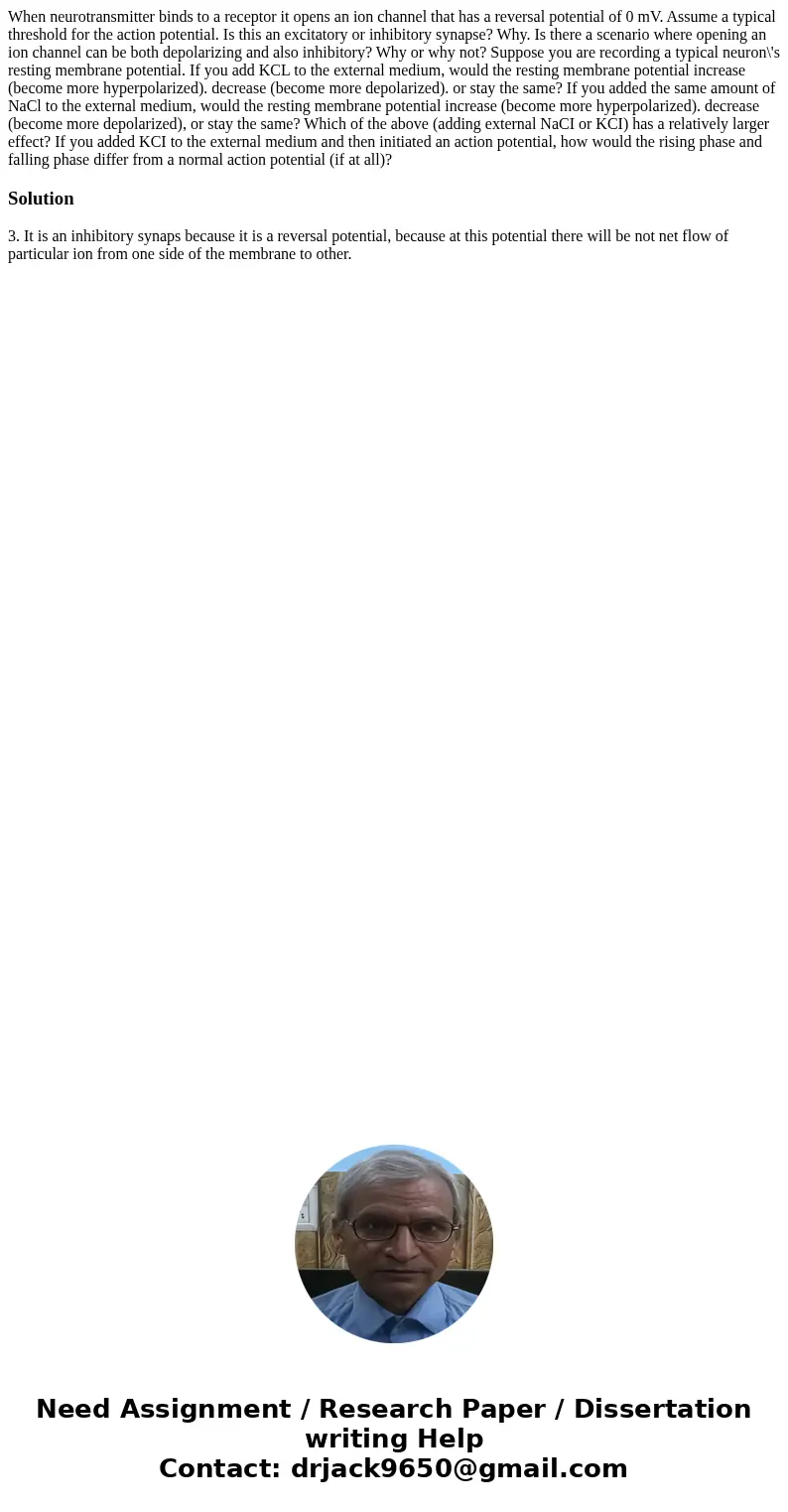When neurotransmitter binds to a receptor it opens an ion ch
When neurotransmitter binds to a receptor it opens an ion channel that has a reversal potential of 0 mV. Assume a typical threshold for the action potential. Is this an excitatory or inhibitory synapse? Why. Is there a scenario where opening an ion channel can be both depolarizing and also inhibitory? Why or why not? Suppose you are recording a typical neuron\'s resting membrane potential. If you add KCL to the external medium, would the resting membrane potential increase (become more hyperpolarized). decrease (become more depolarized). or stay the same? If you added the same amount of NaCl to the external medium, would the resting membrane potential increase (become more hyperpolarized). decrease (become more depolarized), or stay the same? Which of the above (adding external NaCI or KCI) has a relatively larger effect? If you added KCI to the external medium and then initiated an action potential, how would the rising phase and falling phase differ from a normal action potential (if at all)?
Solution
3. It is an inhibitory synaps because it is a reversal potential, because at this potential there will be not net flow of particular ion from one side of the membrane to other.

 Homework Sourse
Homework Sourse